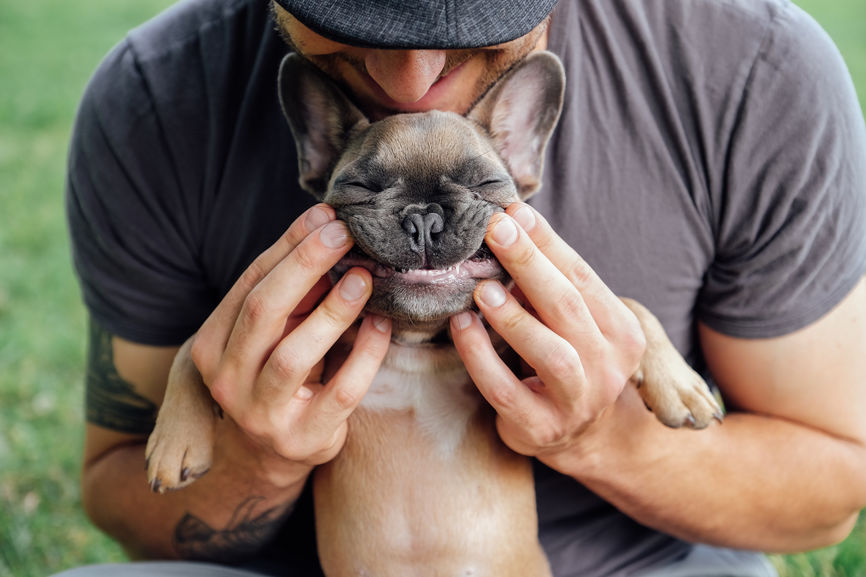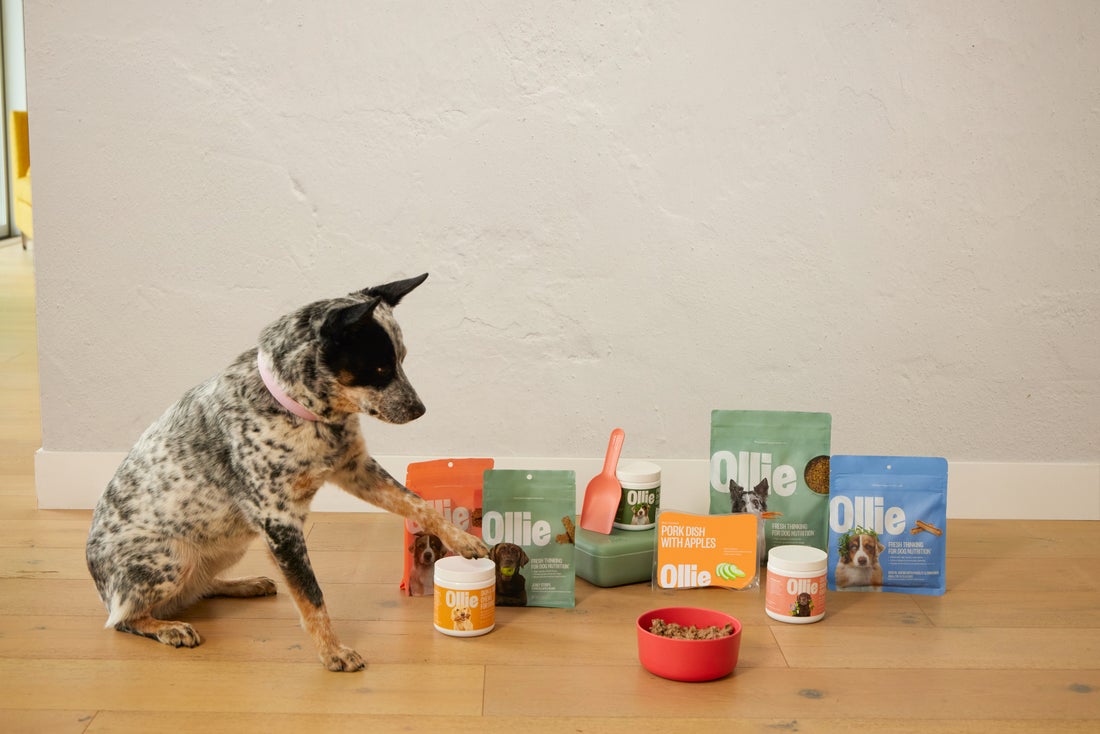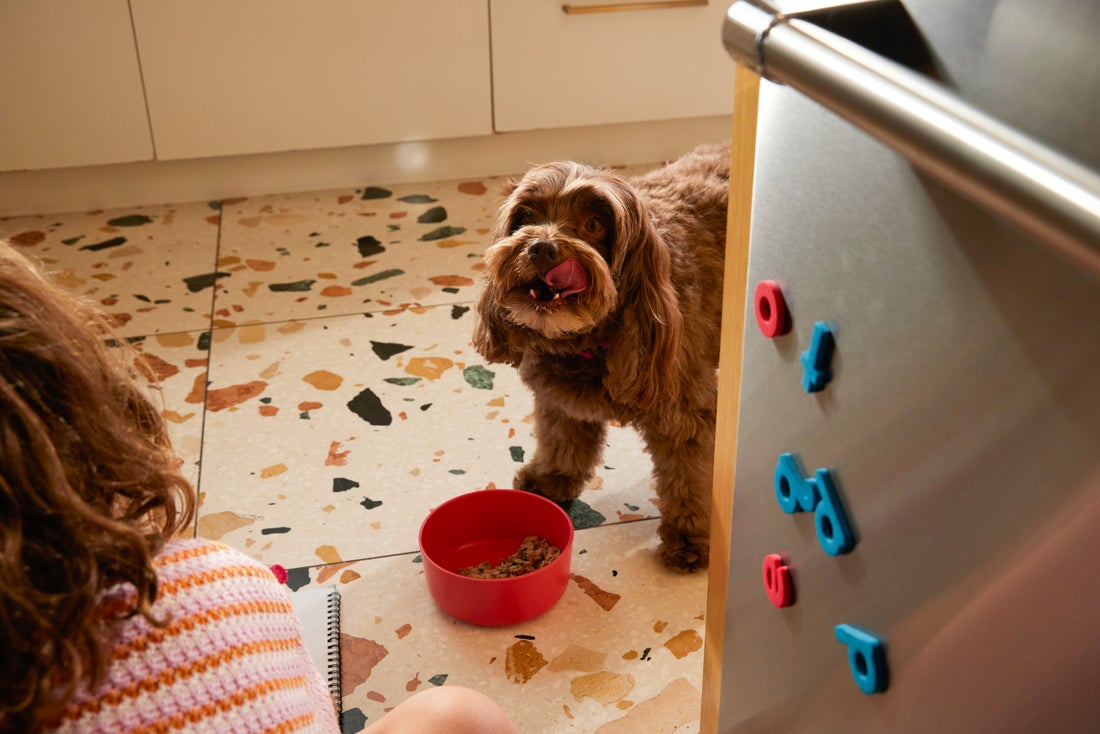Hey Ollie blog readers! We’re offering you an exclusive 60% OFF your starter box! Try now!
You know that ahhhhmazing feeling you get after a massage, when every tight muscle has been relieved, and all those stressful feels have disappeared? Your pup wants to feel that way too! And we’re not just talking about a good belly rub. According to Jonathan Rudinger, L.M.T., RN, founder of PetMassage Training and Research Institute, “the primary benefits of canine massage therapy for dogs is to create balance within the body systems.” Health benefits include everything from improving cardiovascular health to preventing infection to alleviating anxiety. He shared a few easy techniques pet parents can try at home to help their pups relax—and specifically help them improve digestion.
But before you go all masseuse on us, keep in mind these important pointers: Your pup can’t actually handle the same deep pressure that humans can. Rudinger suggests that pet owners “divide the amount of pressure they think they need to use by half, and then by half again.” That way, the pressure your dog is experiencing is comfortable for them. “You want the dogs not to be the victim of your massage, you want the dog to participate in the massage,” he explains.
The Face
Massaging your pup’s (adorable) face “helps express the glands and increase the saliva inside the mouth to help with the softening and processing of the food that they eat,” says Rudinger. Here’s how to do it:
Step 1. Identify the Temporomandibular Joint (TMJ) by standing behind your dog and putting one palm on each side of your pup’s jaw
Step 2. Curl your fingers down underneath the jaw into the soft area under the mouth
Step 3. Slowly stroke your fingers from the chin toward the neck
The Sternum
By massaging your pup’s sternum (aka the breastbone) you are continuing to apply pressure through the pathway of the digestive tract. This is “not only increasing flexibility, but it’s also increasing blood flow and working the Thymus gland,” which will increase your pup’s energy flow, says Rudinger.
Step 1. Migrate your hands from the face down to the the sternum
Step 2. Move your fingers from top of the sternum, all the way down while lightly pressing and moving your fingers from side to side, or as Rudinger likes to recommend, “doing little wiggles.”
The Croup
The last part of the digestive tract you can massage is the base of the tail, which is also called the croup. When you concentrate on this area of your pup, it is “going to be increasing the movement all up and down the spine which helps with flexibility [and] with digestion,” says Rudinger.
Step 1. Place your fingers on either side of the midline
Step 2. Create tiny circles and move from top of the spine down toward the croup.
Incorporate these few exercises into your dog’s daily routine and your pup should be feeling relaxed like never before! For more tips and massage techniques, check out the PetMassage Training and Research Institute YouTube Channel.
The Ollie blog is devoted to helping pet parents lead healthier lives with their pups. If you want to learn more about our fresh, human-grade food, check out MyOllie.com.
Tagged As:

The nutrition your dog needs,
the food they want.

Enjoying our articles? Subscribe our Newsletters and get new articles directly to your inbox
You might also like
30 July 2025
3 MINS READ
The Poop Scoop: Your Dog Digestion Questions Answered
As pup parents, we spend a lot of time handling dog poop, and as a key indicator of a dog’s health, it’s only fitting that we think and talk about it just as much. Unfortunately, what happens …
18 July 2025
6 MINS READ
Can You Mix Fresh Dog Food With Kibble?
If you’re feeding your dog kibble but want to upgrade their bowl, you’re not alone. Many pet parents ask if they can mix fresh dog food with kibble to get some of the benefits of fresh food wi…
by Ollie Pets
18 July 2025
5 MINS READ
Does Fresh Dog Food Help With Weight Loss?
If you’ve noticed your dog carrying a few extra pounds, you’re not alone. According to the Association for Pet Obesity Prevention, over half of dogs in the U.S. are overweight or obese. Extra …
by Ollie Pets







